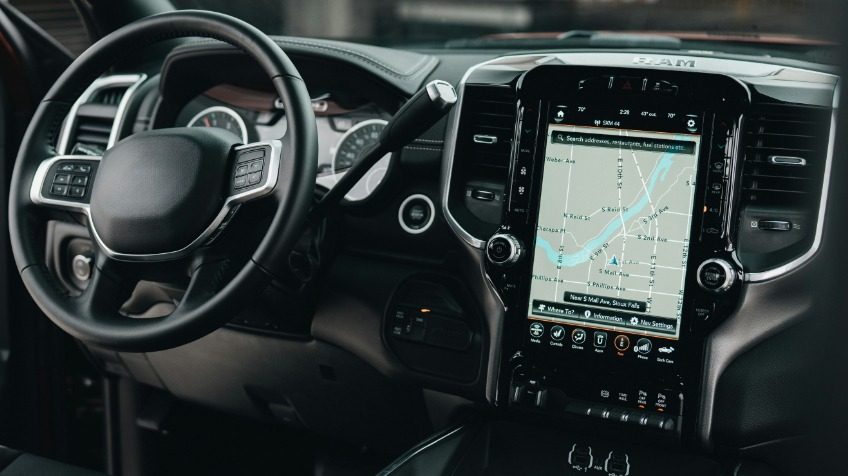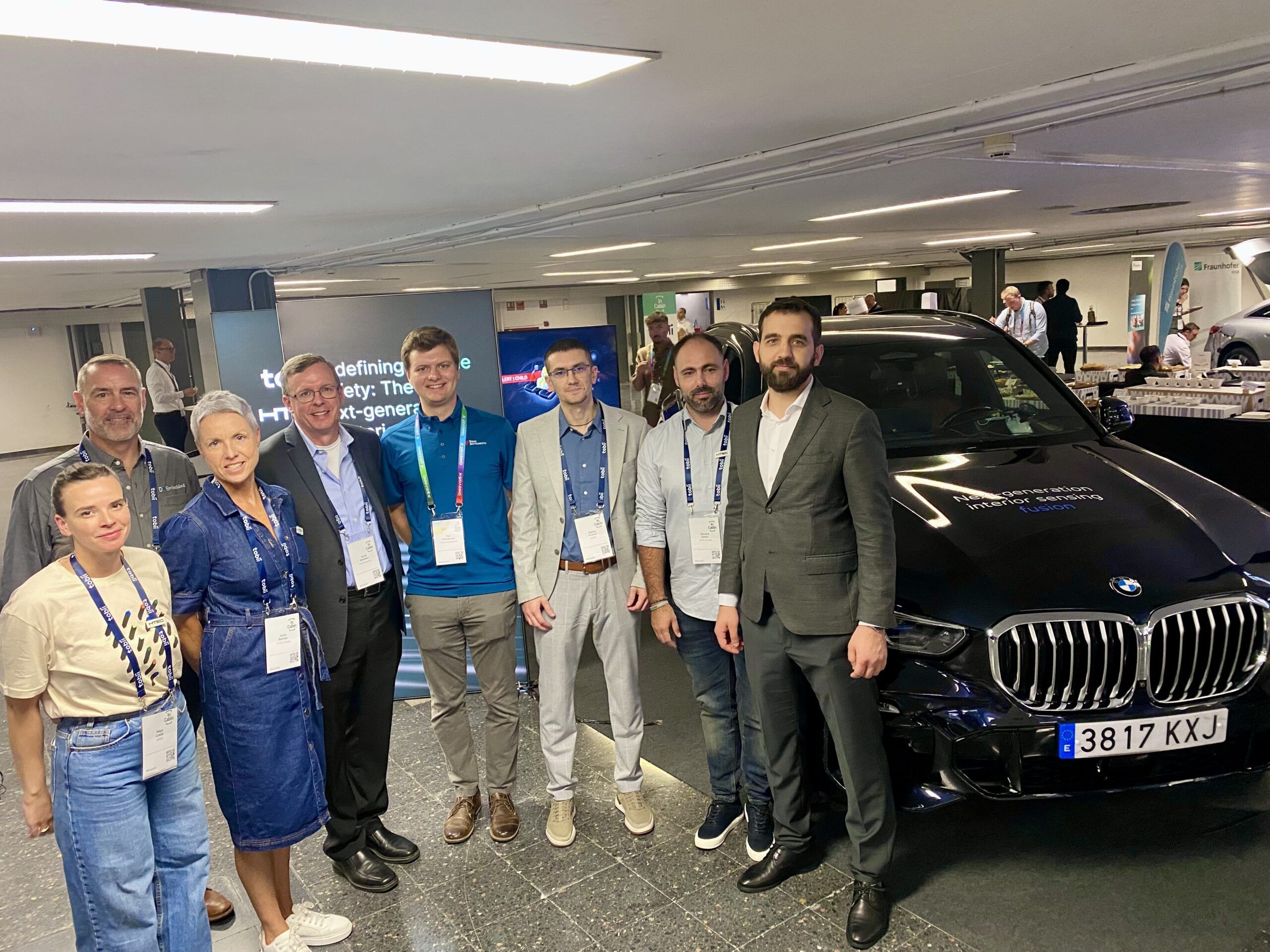Ever since the invention of the wheel, humans have been improving the way we get from point A to B. Transportation has always reflected human progress, and today is no exception. Nowhere is this progress more noticeable than in the motorsport arena, which serves as a window into the vehicles of tomorrow.
The intersection of motorsports and technology was on full display at HTEC Days 2024. HTEC Days is an annual, three-day celebration of technological innovation, and the automotive-themed session was one of its highlights. Ivan Popović, HTEC’s director of engineering and delivery, and Robert Megennis, a professional race car driver with Turner Motorsport in the IMSA Michelin Pilot Challenge, shared their thoughts on the advancements in automotive technology and hinted at developments on the horizon.
A view from the automotive cutting edge
Robert Megennis is a part of the new generation of tech-savvy race car drivers. They rely on data to identify incremental refinements to maximize their driving and vehicle performance and gain a competitive edge.
“If we look at how motorsport has changed in the last 10-15 years”, Robert explains, “it went from who cares the least about crashing their race car and hurting themselves to who can analyze data the quickest, make decisions on the fly, and use technology to be as fast as possible — every single corner, every single lap.”
In modern motorsports, everything that takes place in and around a vehicle is monitored, recorded, and analyzed. Every race car is packed with a staggering amount of technology designed to keep the drivers safe, help them make adjustments on the fly, and optimize their vehicle and driving skills.
Technology is an integral part of Robert’s race prep. He analyzes data recorded while driving and practices on a highly sophisticated racing simulator with real-time data processing and a myriad of adjustments. And, of course, there is the vehicle itself.
“I have technology in my car that allows me to adjust its setup while I’m driving it. I can soften or stiffen the front and rear suspension, I can change the percentage of brake pressure to the front and the rear, I have engine maps, gear maps, throttle maps, traction control mappings, ABS mappings—I can change pretty much anything in the car while I’m driving it. The information I get also enables me to adjust my driving style to the changes in the car and on the track.“
Innovation in the automotive industry: from the racetrack to the highway
For almost a century, motorsports have been the testing ground for groundbreaking technologies. From disc brakes to semi-automatic gears, and even the rear-view mirror, many now-standard vehicle parts were once exotic novelties of the racing world.
The trend persists to this day, with some cutting-edge racing technology bound to make its way into production cars. Robert highlights a few of these features.
“In our race cars, we have unique lights for driving at night. The rearview mirror is connected to a camera at the back of the car, which tracks all the vehicles behind me and signals different colored lights depending on the speed of the approaching vehicle.“
In his role as an advisor to institutions such as West Point, Purdue, and MIT, Robert has had plenty of chances to consider the future of autonomous vehicles.
“Autonomous driving technology is starting to make its way into motorsports. In my opinion, it’s going to allow us to drive as fast as possible. So much of what I do in a car could be done faster and more efficiently with an intelligent machine learning system, and there are going to be huge performance gains in that.”
Robert believes that much of current automotive innovation is going to trickle down into production vehicles.
“West Point has invested a lot of money, effort, and energy into autonomous driving technology. Vehicle accidents are the second leading cause of death in the US military, and they think they will save a lot of lives with autonomous driving. We are going to see more and more of this technology implemented into the everyday.”
Engineering the vehicle of tomorrow
Through his work, Ivan Popović has a daily front-row view of the dominant trends shaping the industry. He is spearheading HTEC’s automotive efforts in areas as diverse as vehicle connectivity, smart mobility, the electric vehicle ecosystem, and beyond.
While the boundaries of automotive innovation are being pushed daily, Ivan believes that the next major breakthroughs for the industry will occur in two areas—propulsion and artificial intelligence (AI).
Propulsion
A combination of economic and ecological sustainability goals is fueling the pursuit of efficient and clean energy. This extends far beyond the current electric vehicles.
“Several major car manufacturers are already investing heavily in hydrogen engines, and this might be the next big thing in our quest for clean renewable energy. Electric vehicles have several energy issues: the production process for batteries is not clean, charging uses existing power sources, the disposal of used batteries, and various problems with electric vehicles in transportation and heavy machinery. If the technology doesn’t support long-term sustainability in energizing electric vehicles, the focus will shift to alternative energy sources. It doesn’t even have to be hydrogen; some other ‘crazy’ ideas about propulsion sources sound like science fiction, but technology is moving so fast that we must keep an open mind.“
Artificial intelligence
As for AI, the technology in this field is advancing so quickly that its possibilities and potential applications seem endless. Ivan believes that we are on the verge of a breakthrough.
“The quantum leap everyone in the industry is waiting for is easier neural network training. Currently, we need enormous data sets to train the networks. For example, in the computer vision area, we might soon be able to train neural networks to recognize objects based on a single image. This holds tremendous possibilities, especially in autonomous vehicles. Additionally, we are mainly using machine learning in automotive and deep learning is not utilized as much. Our reliance on deep learning is going to increase in the years to come, providing even greater space for innovation.”
Keeping pace with automotive innovation
The expression, “May you live in interesting times,” is often considered a curse, but when applied to the current evolution of automotive technology, it sounds promising. We are witnessing an unprecedented wave of innovation in the automotive industry.
The pace of innovation will only accelerate. Major advancements in AI technology, power sources, and other areas have the transformative potential to bridge the gap between science fiction and reality, and we are excited to see how far it will take the automotive industry.
With deep expertise in machine learning, embedded systems, and autonomous driving fused with vast experience across the entire mobility spectrum, HTEC operates at the forefront of automotive innovation.
To accelerate your organization’s automotive innovation explore our automotive capabilities and offerings.





